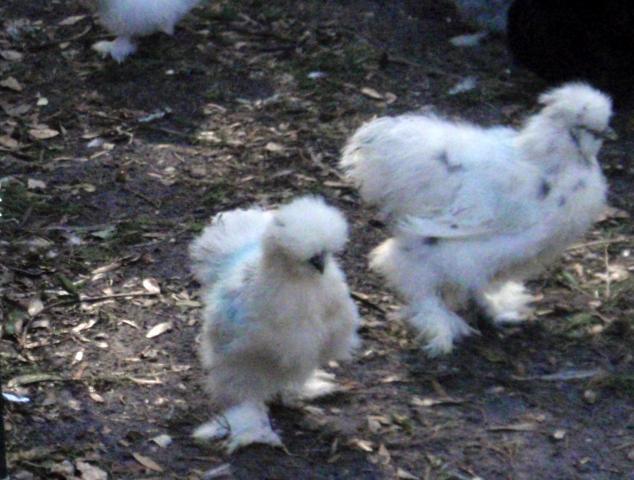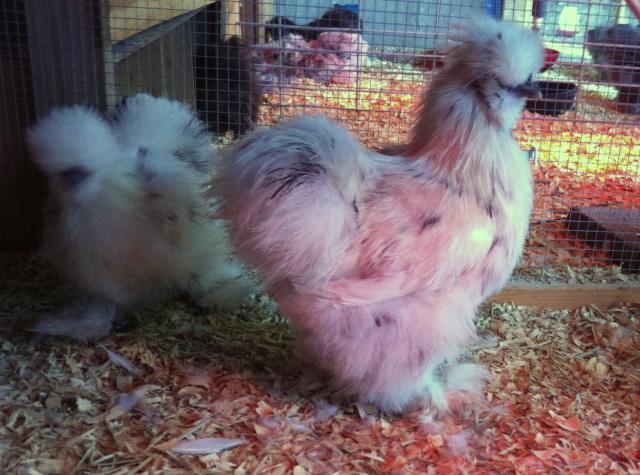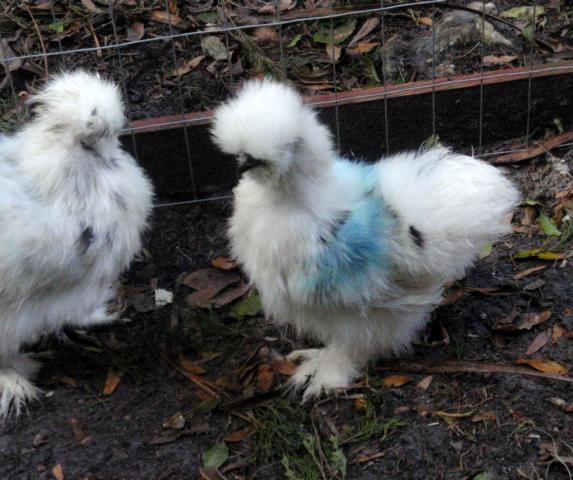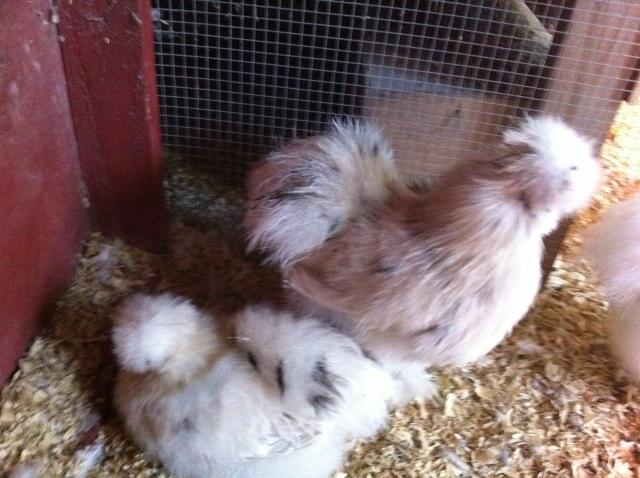Quote:
Because the breed standard for silkies requires black skin, therefore the "holes" in skin pigment, whether you like them or not, are a fault. Silkies are different than colored horses, in that, you can still have the black skin and light feathering. And since it is relatively easy to get rid of the pigment holes, and have the bird meet the existing breed standard - why not do it? Trust me, it would be much more difficult to get a silkie variety accepted that did not have dark skin over its entire body. As for why they are being shown already, the birds we showed at Shawnee had very nice type and met all existing Silkie standard requirements, in fact, we received some nice comments from judges and show officials about them. Second - you have to show a variety for 5 years before it can be submitted for acceptance, and 5 generations from now, these Paint silkies will be very standardized. So, it is best to get them "out" there as soon as possible, to begin the 5 year clock counting down.
I understand that that is the standard of silkies, however if this is a trait that seems to go with the coloring, why not make an exception to the lack of pigment for that variety only?
The lack of color can be bred out and the "holes" filled in within a few gens of breeding & culling. That has been done before with other colors. If you go and lower the standard for one color you will do the opposite of what a standard is for. It is something to breed UP to, not lower your stock down to. An example would be to allow split wings in silkies since there seems to be such a problem with so many birds having it. So don't make it a DQ, allow the defect to breed on, then soon all silkies will have split wings, because it has become fashion and all the winners at the shows have it.
If you look at the Throughbred Racehorse, from the 50's. Very few horses bled through the nose after a work out or race. Then one horse who did very well bled, soon everyone wanted to breed to him. So the next gen of horses 50% bled. The tracks started to allow those that bled to get Lasix to stop the bleeding, the horses ran faster on the drug, then they were bred because they all won. The next gen 100% of the foals bled. Now 3 gens from the first, you have horses that can't run well without drugs, they all bleed, and you have created an industry of let's try to fix it now. So now the horse tracks have banned the drugs, they still have horses that bleed, can't run fast enough to win so they get sent off to the dog food market, and the market is flooded with horses that are not strong enough to do the job, that their grandparents could do, faster and at longer distances.
It is a case of "lowering" the standard, and destroying the critter that has taken generations to perfect. JMO







